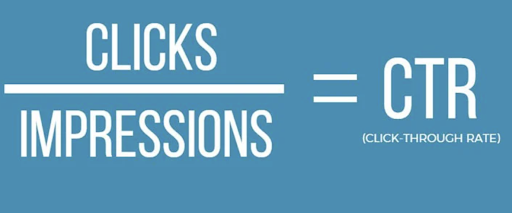Leading Strategies for Reliable CTR Manipulation in Your Digital Campaigns
Leading Strategies for Reliable CTR Manipulation in Your Digital Campaigns
Blog Article
Unlock the Prospective of CTR Control for Improved Project Performance
Exploring the realm of CTR control introduces a realm of opportunities for online marketers seeking to raise their campaign results. By tactically make improvements click-through rates through evaluated techniques, the portal to enhanced performance and target market interaction bids. The merging of data-driven insights and tactical changes paints a landscape where projects can love accuracy and effectiveness. As the trip to decipher the ins and outs of CTR manipulation commences, the possibility for transformative outcomes awaits those who dare to navigate this nuanced landscape.
Recognizing CTR Adjustment Methods
In the world of digital marketing, understanding CTR adjustment strategies is crucial for enhancing campaign efficiency. Click-through rate (CTR) is a crucial metric that gauges the performance of your ads in generating clicks. By controling CTR, online marketers can affect ad performance and ultimately improve campaign results.
One typical technique made use of for CTR manipulation is ad duplicate optimization. Crafting engaging advertisement duplicate that reverberates with the target market can result in greater CTRs (CTR Manipulation). Including strong calls-to-action, appropriate keywords, and special marketing factors can lure individuals to click the advertisement
One more method is proposal adjustments based upon CTR efficiency. Systems like Google Advertisements utilize Quality Rating, which takes into consideration CTR to name a few elements, to figure out ad ranking and cost-per-click. By keeping track of and readjusting quotes based upon CTR information, marketing experts can improve ad visibility and decrease prices.
In addition, A/B testing different ad variations can assist recognize which elements drive higher CTRs. Examining headlines, photos, and descriptions can provide important insights into what resonates finest with the audience, enabling informed optimization decisions.
Recognizing these CTR adjustment methods is crucial for digital marketers seeking to boost campaign efficiency and drive significant outcomes.
Carrying Out Strategic CTR Optimization
To properly carry out strategic CTR optimization, electronic marketers need to take advantage of a mix of data-driven understandings and targeted modifications to boost project efficiency. By examining key metrics such as click-through prices (CTR), involvement degrees, and conversion prices, marketing professionals can identify locations for enhancement and refine their methods as necessary. One essential element of strategic CTR optimization entails performing A/B screening to compare different ad creatives, headlines, or calls-to-action to establish which aspects resonate finest with the target market. Furthermore, maximizing advertisement positioning, organizing, and targeting specifications based upon target market behavior and preferences can significantly impact CTR performance.
Additionally, carrying out keyword optimization and refining ad copy to straighten with individual intent can improve relevance and drive greater click-through rates. Leveraging audience segmentation and personalized messaging customized to certain demographics or passions can likewise boost CTR performance. By continuously monitoring and changing projects based on performance data, marketing experts can tweak their techniques for optimal results and maximize the impact of CTR adjustment on general project success.

Leveraging CTR for Boosted Conversions
Utilizing click-through rate (CTR) as an essential statistics in electronic marketing can function as a potent catalyst for improving conversion prices. A high CTR shows that the advertisement or material is reverberating well with the audience, driving even more web traffic to the site. By leveraging CTR to boost conversions, marketing experts can concentrate on maximizing their campaigns to attract certified leads that are you can look here most likely to make an acquisition or take a preferred activity.
To utilize CTR successfully for enhanced conversions, it is important to evaluate the efficiency of different ads, key words, and targeting strategies. By identifying which elements drive greater CTRs, marketing professionals can tailor their campaigns to attract the best target market and motivate them to convert. Furthermore, A/B testing can help in refining ad copies, visuals, and calls-to-action to improve CTR and eventually drive more conversions.

Evaluating Impact of CTR on Campaigns
Building on the foundation of leveraging CTR for increased conversions, an essential aspect of enhancing electronic marketing campaigns involves assessing the influence of click-through price on general campaign efficiency. Click-through read more price (CTR) acts as an essential statistics in gauging the effectiveness of digital advertising and marketing efforts. By evaluating CTR data, marketers can gain beneficial understandings into just how well their ads reverberate with the target audience and exactly how compelling they are in driving user engagement.
Understanding the influence of CTR on campaigns is crucial for making notified decisions relating to ad creatives, targeting methods, and spending plan allocations. A high CTR indicates that the ad is engaging and relevant to the audience, possibly resulting in raised conversions and a greater return on investment. On the other hand, a low CTR might indicate problems with advertisement significance, messaging, or targeting, calling for changes to boost project efficiency.
Fine-Tuning CTR for Better Outcomes
Maximizing click-through rate (CTR) is a basic element of improving digital advertising project performance. Fine-tuning CTR includes strategic adjustments to boost the likelihood of customers clicking on your ads or content. One reliable approach is A/B screening various advertisement creatives, headings, or call-to-action switches to identify which elements resonate best with your target audience. By evaluating the performance of these variants, you can enhance CTR by releasing one of the most compelling parts.
In addition, refining target market targeting is vital for enhancing CTR. Tailoring your ads to particular demographics, rate of interests, or actions can substantially influence click-through rates. Making use of information analytics and consumer understandings i was reading this can help you determine one of the most responsive target market segments and customize your messaging as necessary.
Additionally, enhancing the positioning and timing of your ads can increase CTR. Trying out different advertisement positionings on different systems and identifying peak times when your target audience is most active can aid make best use of engagement and CTR. Continually checking and readjusting these aspects based on performance information is key to adjust CTR for far better campaign results.
Conclusion
Finally, opening the possibility of CTR adjustment through critical techniques like A/B testing and keyword optimization can substantially boost project efficiency. By constantly examining data and making real-time adjustments to advertisement messaging, marketing experts can boost click-through rates and drive higher interaction. This refined technique not just improves visibility and reduces expenses however additionally leads to enhanced conversions and a stronger return on financial investment.
By manipulating CTR, marketing experts can influence ad efficiency and inevitably improve project outcomes. CTR Manipulation.

Comprehending the impact of CTR on projects is necessary for making informed decisions regarding advertisement creatives, targeting approaches, and spending plan allotments. On the various other hand, a low CTR might indicate issues with advertisement importance, messaging, or targeting, calling for adjustments to boost project performance.
Report this page